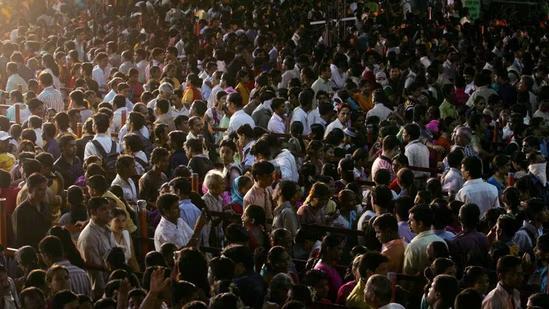
There Could be Billions More People on Earth than Estimated: Study
The world population is a topic of great interest and concern, with many experts and organizations working tirelessly to understand and address the challenges that come with it. According to the United Nations, the world’s population currently stands at around 8.2 billion people. However, a recent study has cast doubt on the accuracy of these estimates, suggesting that there could be billions more people living on Earth than previously thought.
The study, conducted by researchers from Aalto University in Finland, analyzed data from rural areas around the world and found that the true number of people living in these areas could be significantly higher than estimated. In fact, the study suggests that the rural population could be undercounted by anywhere between 53% to 84% over the study period between 1975 and 2010.
What does this mean? If the estimates are correct, it could mean that there are billions more people living on Earth than previously thought. This has significant implications for our understanding of population growth, resource management, and the challenges that come with it.
So, what led the researchers to this conclusion? To answer this, let’s take a closer look at the study and its findings.
The Study Methodology
The researchers used a combination of data sources, including household surveys, censuses, and other administrative records, to estimate the rural population in different parts of the world. They focused on 13 countries in Africa, Asia, and Latin America, where rural populations are often undercounted due to limited access to data and infrastructure.
The researchers used a technique called “indirect estimation” to estimate the rural population. This involves using data from other sources, such as national censuses, to estimate the number of people living in rural areas. They then compared these estimates to the actual data collected from household surveys and other sources to see if there were any discrepancies.
The Findings
The study found significant discrepancies between the estimated rural population and the actual number of people living in these areas. In some countries, the undercount was as high as 84%, while in others it was as low as 53%. The researchers found that the undercount was highest in countries where the rural population was already relatively small, such as in Latin America.
The study also found that the undercount was higher in areas where there was limited access to data and infrastructure, such as in rural Africa. This is not surprising, given the challenges that come with collecting data in these areas, including limited access to transportation and communication networks.
Implications
So, what are the implications of this study? First and foremost, it suggests that the global population could be higher than previously thought. This has significant implications for our understanding of population growth and the challenges that come with it.
For example, if the true number of people living on Earth is higher than estimated, it could mean that the world’s resources, including food, water, and energy, are being stretched even thinner than previously thought. This could have significant implications for our ability to meet the needs of the world’s growing population.
The study also highlights the importance of improving data collection and estimation methods, particularly in rural areas where access to data is often limited. This could involve using new technologies, such as satellite imaging and mobile phone data, to collect data and improve estimates.
Conclusion
The study’s findings suggest that the true number of people living on Earth could be significantly higher than previously thought, with billions more people living in rural areas around the world. This has significant implications for our understanding of population growth and the challenges that come with it.
The study highlights the importance of improving data collection and estimation methods, particularly in rural areas where access to data is often limited. It also underscores the need for more accurate estimates of the world’s population, which is critical for addressing the challenges that come with it.
As the world’s population continues to grow, it is essential that we have accurate estimates of the number of people living on Earth. The study’s findings suggest that there could be billions more people living on Earth than previously thought, and it is essential that we take steps to improve our understanding of population growth and the challenges that come with it.
Source:






